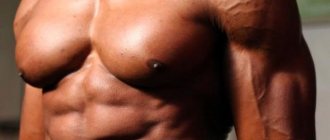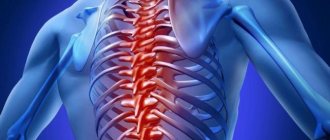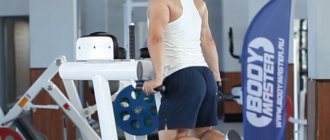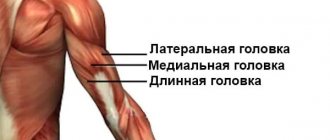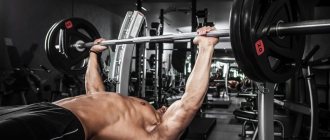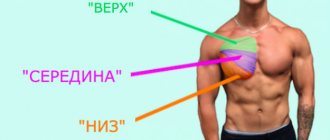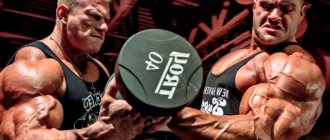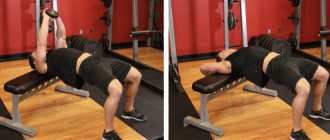Firm, toned breasts are the pride of women and the admiration of men. But a chic neckline is not only an aesthetic pleasure. This is also a subconscious signal to the opposite sex that in front of the man is a successful expectant mother, capable of fully feeding her offspring.
There is something to fight for. And in addition to a balanced diet and cosmetic breast skin care, thoughtful and most effective exercises for breast lift at home will help you achieve your goal. But first, briefly about how the female breast works.
Do women need to train their chests?
Before asking yourself how to pump up a girl’s breasts, let’s determine whether there is a need for this and what benefits can be obtained from it:
- The pectoral muscles are involved in most of the daily actions that we perform mechanically. For example, the chest muscles trigger all “pushing” movements. The simplest examples are opening doors or pushing a baby stroller. Accordingly, developed chest muscles can make many everyday activities easier.
- The pectoral muscles affect posture. We spend most of the day in front of laptops and phones, rounding our backs and slouching. This body position causes compression/shortening of the chest muscles and lengthening of the back muscles. This imbalance causes many health problems and prevents the body from working efficiently.
- With proper chest exercises, blood circulation, digestion, and lung function improve. The pectoralis minor muscle is active with every breath. In fact, this is what helps open the aperture. If the chest is deformed and narrowed, breathing may become shallow and not provide the body with the necessary flow of oxygen-rich blood.
- Chest exercises help work many other muscles. Typically, the shoulders, triceps, back, abdominal muscles and core are simultaneously involved.
Myths about chest training
There are several myths regarding chest training for women. Some believe that chest exercises can make them smaller and therefore avoid them in every possible way. Others hope that training will increase it. But the truth is that both assumptions are wrong.
A woman's breasts are made up of fat and mammary glands. It is impossible to influence them locally using exercises. Breast size is determined by a combination of genetics, lifestyle and body weight.
How can exercise help? Pumping the muscles tones the chest area, making it more prominent, and slows down sagging and the appearance of sagging. The cumulative effect is more like a tightening than an enlargement.
Breasts may become smaller due to general weight loss. Fat in the body is burned evenly, including that located in the chest. Therefore, many women seeking to lose weight should be prepared for the extra centimeters to disappear not only from problem areas.
According to the American Council on Exercise, for "basic physical and physiological health" women should have at least 10-13% body fat. Levels below 10% may result in health risks.
The best and most effective exercises for the pectoral muscles
Bench press
The basic exercise develops all areas of the pectoral muscles equally.
The bench press is performed in a horizontal position.
- The athlete should take a lying position on a bench with his feet on the floor. In the classic execution, it is correct to use a medium grip. The hands are located at a level slightly wider than the shoulders.
- The exercise begins with a downward movement while inhaling. The bar at the lowest point of the amplitude should not touch the chest.
- You need to lower the weight smoothly without jerking and under no circumstances throw the barbell onto your chest.
- At the lowest point of the amplitude, you should take a short pause and, while exhaling, concentrate and slowly perform an upward movement. There is no need to fully straighten your arms at the elbow joints.
- The bar can be taken with a wide grip, which will provide stress on the outer areas of the pecs. The technique does not change, however, it is worth considering that the load on the elbow and shoulder joints with such a grip will increase, so the working weight should be reduced.
Bench press on an incline bench
The basic exercise develops the upper and middle part of the pectoral muscles with an emphasis on the upper part.
- The movement is performed in the same way as a horizontal press, but for maximum effectiveness the bar should move at the level of the upper pecs close to the collarbones.
- This exercise can be performed first if the upper part of the target muscle is lagging, or second after the horizontal press.
Read more about the bent over bench press →
Bench press at a negative angle
The basic exercise develops the lower part of the pectoral muscles; it is performed using a special bench press.
- Having fixed the body position with the help of clamping rollers, the athlete takes a position lying upside down. Notice that the bar moves over the lower border of the pecs. This exercise is considered more difficult and dangerous due to the awkward position of the athlete.
- The upside down press is best performed in pairs. If for some reason the weight needs to be dropped or the athlete is pinned down, the bar will move towards the neck.
- The exercise is identical to the rest of the barbell presses in a horizontal position.
Read more about the overhead press →
Bench press
This press variation is designed to increase strength in the pectoral muscles and minimize assistance from the triceps.
- It is performed on a hard, flat surface that does not allow the elbows to drop below the level of the body, which makes it impossible to engage the triceps, since they are fully involved in the work when the arms are bent at an angle of more than 90 degrees.
- Starting position: lying on the floor. Legs are bent at the knees. The feet rest on the floor. For better balance, they can be spaced wider.
- The arms are bent so that the elbow joints form a right angle.
- The exercise is identical to the bench press.
Dumbbell Bench Press
This technique develops the pectoralis major muscles and is performed in a horizontal position.
- Starting position: lying on a bench. The arms are extended at chest level. The dumbbells are located level with the chest across.
- At the lowest point of the amplitude, the dumbbells are located at torso level. The elbows are bent at right angles.
- The upward movement is performed as you exhale until the dumbbells connect at the top point of the amplitude.
- You can also perform a reverse vertical movement without connecting the dumbbells.
Read more about the dumbbell bench press →
Incline Dumbbell Press
The exercise is aimed at developing the upper part of the pectoral muscles. It is performed lying on a bench with the back tilted at 40 degrees. The technique is identical to the dumbbell bench press lying on a horizontal bench.
Read more about the dumbbell incline press →
Negative Angle Dumbbell Bench Press
The press is aimed at developing the lower part of the pectoral muscles. This type of dumbbell press can be classified as a complex exercise because it is performed in an unusual position in the absence of stable and reliable fixation of the sports equipment.
The working weight should be kept low. It is ideal for the athlete to be supported by a partner during the execution of movements, and also to give and receive dumbbells. The exercise is performed in the same way as other types of dumbbell presses.
Lying dumbbell lateral raises
The exercise is aimed at stretching the chest and improving blood circulation in the target muscles, promoting better muscle fiber growth and faster recovery. The fly is performed on a horizontal bench or on an inclined bench.
- Starting position: lying with arms extended above the chest.
- The movement begins by spreading your arms to the sides. The elbows should not bend too much; it is important to statically maintain a small angle to relieve the load on the elbow joints.
- The lowest point of the amplitude will be reached when the dumbbells are at torso level.
- The return movement is performed as you exhale until the dumbbells connect at the top of the amplitude.
Dumbbell flyes lying on a horizontal benchDumbbell flyes lying on an incline bench
Pullover
The pullover is aimed at stretching the chest and improving the elasticity of the target muscles. Promotes better muscle fiber growth and faster recovery.
- To perform this exercise, you need to take a lying position on a bench so that your head lies at the very edge. Hands with a dumbbell in a vertical position should be placed above the solar plexus.
- The back should be arched so that the torso lies on the bench, resting on the shoulder blades, forming a “wheel”.
- Having drawn air into your lungs, you need to move behind your head with your arms straight, slightly bent at the elbow joints.
- The dumbbell is held by a weighted disc. The athletic apparatus is lowered as low as possible to create maximum stretch in the pectoral muscles.
- After this, as you exhale, a return movement is performed.
- Please note that when moving your arms, your pectoral muscles and triceps should work.
Bringing hands together in crossover
This exercise is considered an excellent addition to basic exercises. Develops the entire chest. To perform this you need to use stirrup handles.
- Taking a position in the center under the frame of the crossover, putting one leg forward and slightly tilting the torso, we concentrate our hands together at waist level in front of us.
- The arms are slightly bent at the elbow joints to reduce the load on the ligaments.
Read more about bringing your hands together in a crossover →
Dips
Develops chest muscles with an emphasis on the lower part. There are several types of dips, but in this article we will look at the classic one - with an emphasis on the pectoral muscles.
- To do this, you need to perform a movement with the body tilted forward.
- The downward movement is performed while inhaling, and the reverse movement is performed while exhaling, slowly and smoothly.
Svend press
Develops the central part of the chest. In order to get the desired effect from this exercise, it should be performed in a lying position. To do this, you will need a weighting disk, which must be held on both sides with your palms.
- From the position on outstretched arms, the weight drops down vertically at chest level, after which it returns to its original position.
- This exercise should be performed with light weight.
Read more about the Svend press →
Reduction of arms in the butterfly simulator
An additional exercise is designed to work the center of the chest. The technique is simple. In the simulator you need to position yourself so that the levers are at the same level as your shoulders, and you move along the trajectory of the levers of the structure.
Read more about bringing your arms together in the simulator →
Hammer press
Develops the middle and upper part of the chest. Relevant as an additional exercise for the purpose of effectively working the pectoral muscles. The technique is simple. The movement is carried out concentrated by the pectoral muscles along the trajectory specified by the simulator.
Read more about seated, prone and bent over hummer presses →
Push-ups with classic hand position
Aimed at developing the pectoral muscles.
- You need to take a lying position and place your hands at the level of the pectoral muscles so that at the lowest point of the amplitude an angle of 90 degrees is formed in the elbow joints.
- The downward movement is smooth. The body is positioned horizontally. The pelvis should not sag or rise.
- The upward movement is done while exhaling.
Read more about push-ups →
Push-ups with wide arms
Develops the chest and emphasizes the load on the outer and middle part of the chest.
- Starting position: lying position. The arms should be placed so that an angle of approximately 50 degrees is formed at the elbow joints.
- The body is in static tension. The pelvis does not sink or rise, but is located at the same level during the movement.
Read more about push-ups with wide arms →
Narrow push-ups
An exercise aimed at developing the triceps and mid-pectoral muscles.
Technically, the movement is identical to other types of push-ups, and differs only in the placement of the hands. The hands are placed at the level of the lower chest as close to the body as possible.
Read more about push-ups with narrow arms →
Bringing the arm with an expander
Aimed at working the outer part of the chest muscle. Performed alternately with each hand. The expander is attached to the vertical part of a reliable and strong structure. This could be an exercise machine or some household item. By bending your arm at the elbow, you move to the side, stretching the expander.
Standing expander press
Having secured the expander at chest level and grasping its edges with your hands, perform a forward press. This exercise can be performed standing, lying on the floor or bench, passing the tape behind your back.
Dumbbell flyes, lying down
This exercise works the chest in a stretched state, the greatest tension is achieved when the arms are spread to the sides. The bench fly, like the vertical block fly, is an excellent exercise for “finishing off” the chest.
- We took a medium-weight dumbbell in each hand and lay with our backs on the bench.
- In the starting position, the arms are straightened above the chest, palms turned inward.
- Slowly raise your arms to the sides, lowering the dumbbells. Elbows should be slightly bent. We lower it until we feel that the pectoral muscles are well stretched.
- We perform the exercise carefully - we monitor the technique, and do not lower the weight below a comfortable level.
- Having spread our arms to the limit and stretched the pectoral muscles, we slowly return the weight to the starting position. At the top point, the pectoral muscles were tensed. We repeated the movement.
Sample training plan
In the selected set of exercises, you need to frequently change places to avoid addiction and stagnation. In this sample program, do 1-2 sets to warm up and two sets to failure.
Workout 1
| Exercises | Approaches | Repetitions |
| Bench press | 3–4 | 6–10 |
| Wiring on a vertical block | 3 | 10–12 |
| Incline Dumbbell Press | 3 | 6–10 |
Workout 2
| Exercises | Approaches | Repetitions |
| Smith machine incline bench press | 3–4 | 6–10 |
| Dumbbell bench press | 3 | 6–10 |
| Layout on a horizontal bench | 3 | 10–12 |
Wiring on a vertical block
This movement is a good way to add variety to your chest routine. In this exercise, the pectoral muscle works perfectly throughout the entire trajectory of movement from top to bottom. This type of fly helps work the inside of the pectoral muscle, where the muscle attaches to the sternum.
- Grasp the handles of the vertical block with both hands.
- Stand up straight, arms spread to the sides, palms turned down.
- Lean forward slightly and begin to pull the handles towards each other until your hands meet opposite your hips.
- At the end point, the chest was tensed, then slowly returned to the starting position.
- Watch your arms as you move - your palms should be facing each other and your elbows should be slightly bent.
Dumbbell bench press
The main difference between this press and the barbell press is that by using dumbbells you can stretch the muscles further and develop more tension in them.
Because your arms work independently, you need to put more effort into balance and coordination. By experimenting with different rotations of your wrists, you can load the muscles in different ways.
- Lie down on a horizontal bench, holding dumbbells near your shoulders.
- Palms turned inward, we begin to squeeze the dumbbells upward. While moving, keep your elbows in a position that is comfortable for you.
- At the top point, tense the pectoral muscles, then slowly lower the weight back to the starting position.
Pushups
The most common chest exercise in the world that does not require any equipment or equipment. It can be performed anywhere and anytime. It is often used in women's athletics to tighten the breasts, to give them a firm and beautiful shape.
Push-ups not only help develop and strengthen the pectoral muscles, but also increase the elasticity of the long back and abdominal muscles.
Classic push-ups are performed with your palms shoulder-width apart. Push-ups that are wider than shoulder width increase the load on the pectoral muscles. If you use a narrow emphasis, with the palms of your hands touching, the load on the triceps will increase.
Push-ups with your feet resting on a ladder or a high bench make them more difficult, as the load is redistributed to the upper area of the pectoral muscles. The higher the height of the leg support, the harder the exercise is and the more the upper sections of the muscles are strengthened and loaded.
It’s not difficult to learn how to do push-ups 10-12 times in several approaches, even at home. But for further breast growth it is necessary to somehow increase the load. This can be done in several ways:
- Perform push-ups on one arm. To maintain balance, the opposite leg can be set aside at an angle of 45–90 degrees.
- Wear a backpack with weights on your back or ask your partner to sit on your back.
- Take an elastic rubber expander in your palm, first passing it behind your back.
Push-ups work well for both men and girls.
Recommendations: how to pump up your pectoral muscles
- Despite the variety of exercises, training for pumping up the chest should consist of a maximum of five exercises. In rare cases, if we consider professional athletes who pump exclusively one muscle group in one day, you can perform 6 or even 8 exercises. To quickly and effectively develop muscle mass, a popular scheme using sets is suitable. To quickly build muscles, it is optimal to perform 3-4 sets of 8-12 repetitions.
- In order to reduce body weight, it is important to perform basic exercises in rounds or use circuit training. The number and duration of rounds, as well as circles in the complex, are established based solely on physical fitness.
- To develop strength, you need to train using a large weight, which starts at 80% of the maximum, and perform 5-6 sets with a minimum number of repetitions not exceeding five.
- At the end of the workout, you need to do chest stretching exercises.
